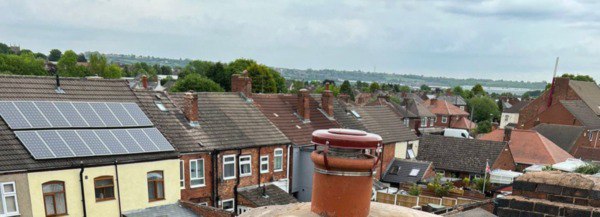Safeguarding Your Roof: The Vital Role of Post-Storm Inspections in Detecting Slipped Tiles
Introduction: Severe weather events can wreak havoc on roofs, causing damage that compromises their structural integrity and aesthetic appeal. Among the common issues homeowners face after storms are slipped tiles, which, if left unchecked, can lead to more significant problems over time. This blog post explores the importance of regular roof inspections following severe weather events to detect slipped tiles promptly and prevent further damage.
1. Identifying Slipped Tiles: Slipped tiles occur when strong winds, heavy rain, or other severe weather conditions dislodge individual roofing tiles from their proper position. While some slipped tiles may be immediately visible from ground level, others may go unnoticed without a thorough roof inspection. During a post-storm inspection, homeowners or roofing professionals carefully examine the entire roof surface to identify any tiles that have shifted or become displaced due to storm damage.
2. Preventing Water Infiltration: Slipped tiles create gaps and openings in the roof structure, exposing vulnerable areas to water infiltration. Even a single slipped tile can compromise the roof’s waterproofing capabilities, allowing moisture to seep into the underlying layers and penetrate the home’s interior. By promptly detecting and repairing slipped tiles after a storm, homeowners can prevent water damage, mould growth, and structural deterioration, preserving the integrity of their roofs and protecting the interior living spaces.
3. Preserving Energy Efficiency: In addition to moisture intrusion, slipped tiles can also impact the home’s energy efficiency by allowing conditioned air to escape and outdoor air to enter. Gaps created by slipped tiles create pathways for air leakage, causing heating and cooling systems to work harder to maintain desired indoor temperatures. Homeowners can promptly address slipped tiles through post-storm inspections and repairs to ensure optimal energy efficiency and lower utility costs year-round.
4. Extending Roof Lifespan: Neglecting slipped tiles can lead to accelerated roof deterioration and premature failure, shortening the overall lifespan of the roofing system. Over time, exposure to moisture, sunlight, and other environmental factors can cause further damage to the underlying roof structure and compromise its performance. Regular inspections and timely repairs help extend the roof’s lifespan by addressing issues such as slipped tiles before they escalate into more extensive and costly problems.
5. Enhancing Home Safety: Slipped tiles pose a safety hazard not only to the integrity of the roof but also to the safety of occupants and visitors. Loose tiles may become dislodged entirely during subsequent storms or strong winds, posing a risk of injury or property damage. By proactively addressing slipped tiles through thorough post-storm inspections, homeowners prioritise the safety and well-being of everyone in the household and mitigate potential liabilities associated with roof-related accidents.
Conclusion: Regular roof inspections following severe weather events are essential for promptly detecting and addressing slipped tiles. By identifying and repairing slipped tiles early on, homeowners can prevent water infiltration, preserve energy efficiency, extend their roofs’ lifespan, and enhance their homes’ safety. Whether conducting inspections themselves or hiring professional roofing contractors, homeowners should prioritise post-storm assessments to safeguard their roofs against damage and ensure long-term performance and durability.
Call us on: 01226 445 195
Click here to find out more about DHT Roofing Cudworth
Click here to complete our contact form and see how we can help you with your roofing needs.

